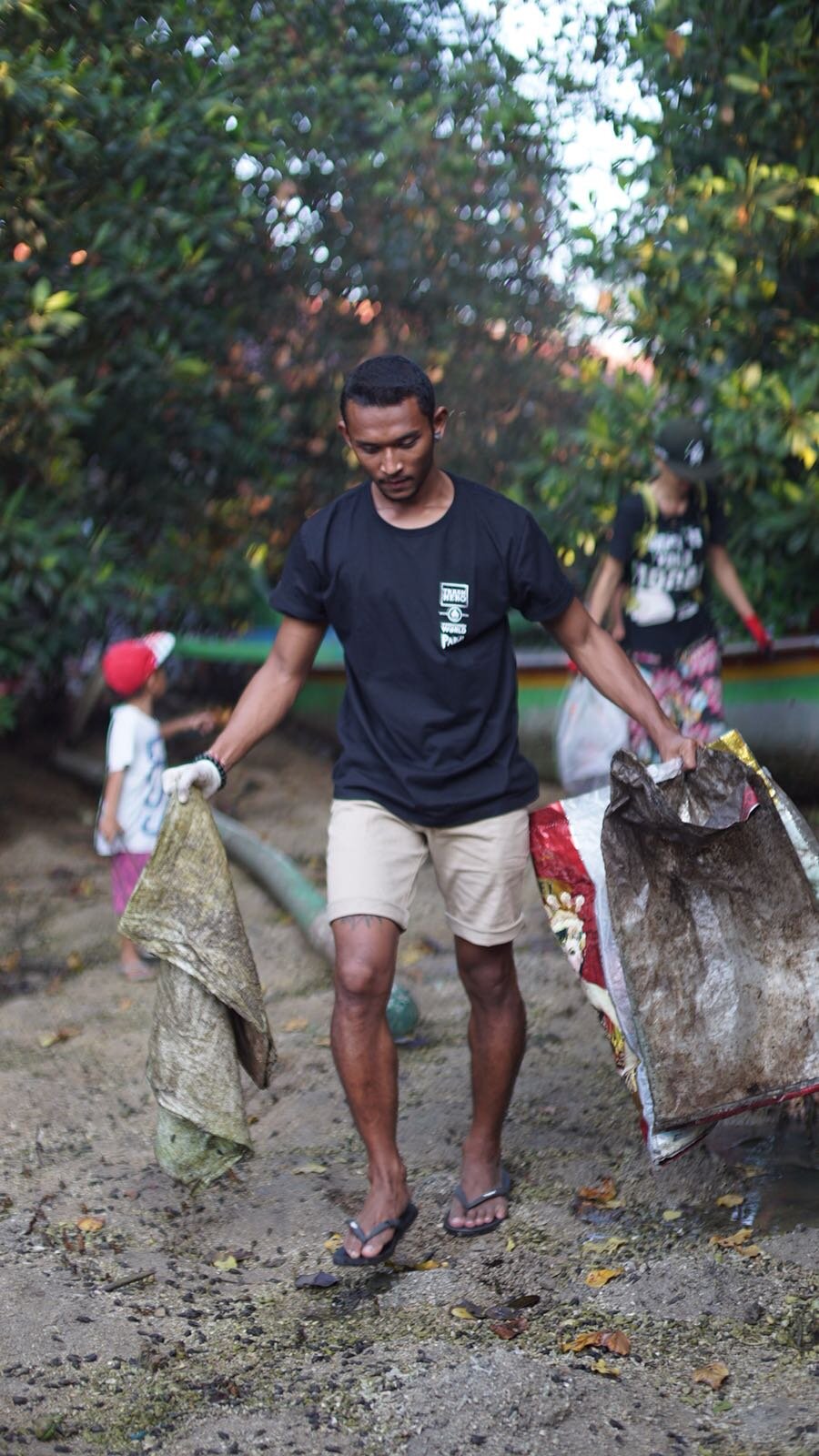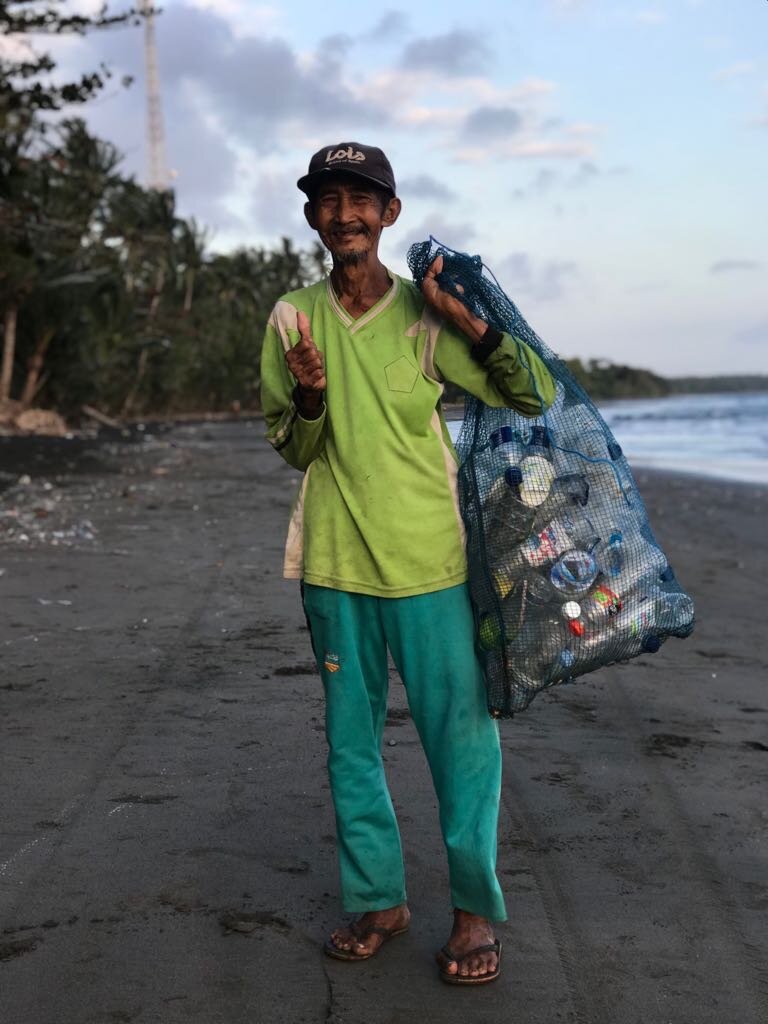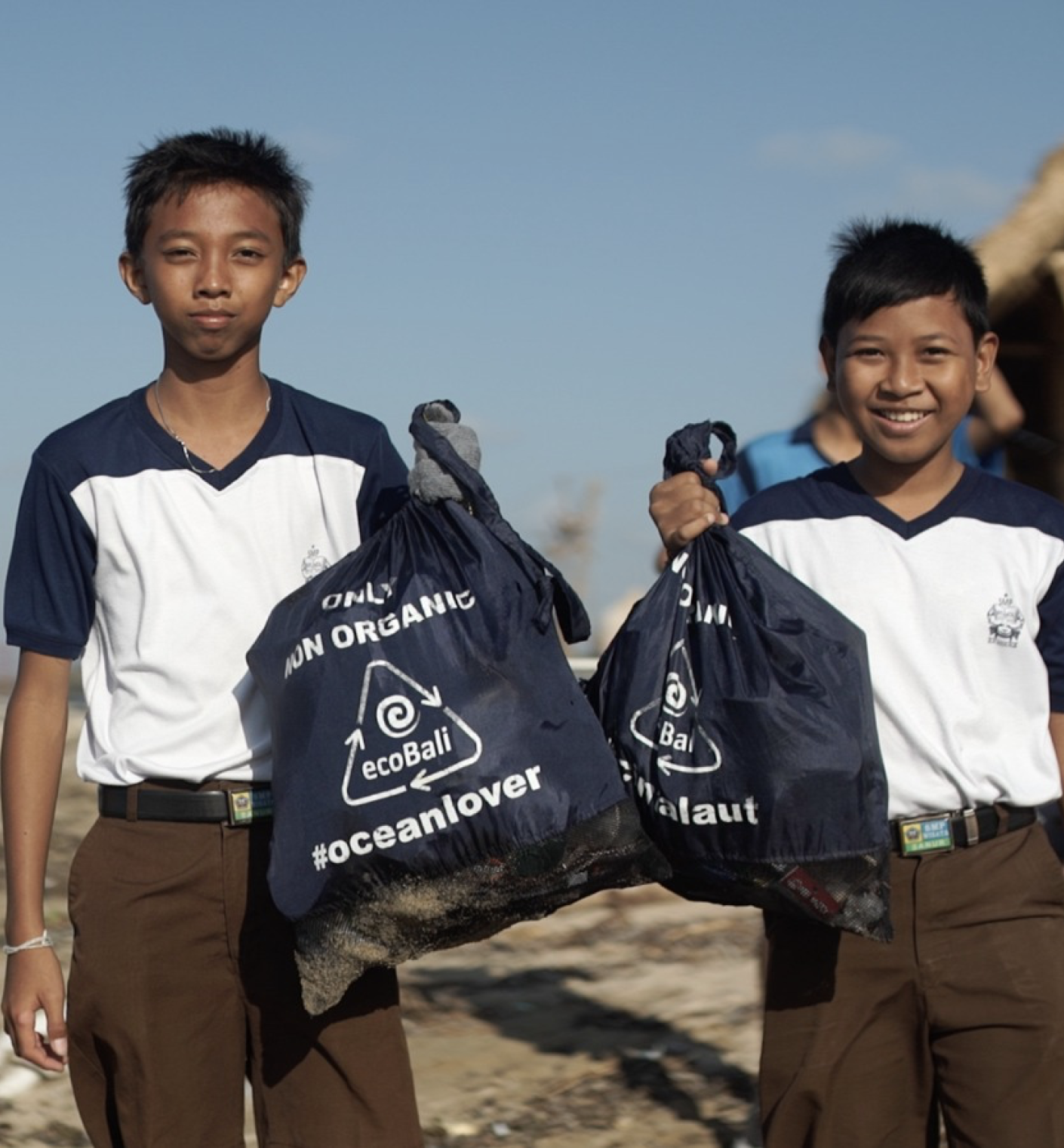Freediving in Plastic
An article written by Make A Change collaborator, George Brill.
We all know the facts. That the world produces over 380 million tonnes of plastic a year: double that produced in 1996, the year I was born; and set to double again by 2034. We all know that 8 of those million end up in the oceans each year, and that by 2050 the cumulative mass of ocean plastic will total over 900 million tonnes, outweighing that of all the fish in the sea. We know that 90% of all seabirds have plastic in their stomachs, 100% of all marine turtles; and that 1 in 3 sea mammals are entangled in the stuff; that the resultant death toll amounts to over a 100,000 of the latter pair, and a staggering 1 million of the former. Annually. We know it’s in our water, in our food, in every aspect of our lives; that some estimates suggest each one of us consumes a credit-card worth of the indestructible material every seven days. And of course, we’re all aware that should the ocean die, as it surely will under such a choking cascade, then we too shall die: an inescapable consequence of our inseverable reliance on the ocean for climate regulation, food, economy. Even the very air we breathe.
But these are just numbers. We’ve all heard them, we all register them, and after a brief period of reflective shock, let them pass. For it is human nature—they are only words, statistics, ink on paper; they are so far from the lives we live that our minds cannot truly comprehend or relate to their significance. Yet in that detachment we weave a dangerous illusion of security, for it is a significance that is perhaps far closer and more ominous than even our deepest pessimisms ever foretold.
Photo by Jimena Ramon Montemayor
In May 2018 I sampled my first true taste of the world below. Learning to freedive on the north-east coast of Bali I was captured by a subaquatic paradise: a many-colored city of coral, fish and flora; a vivid dance of the great marine ecosystem. For months I dived, enthralled and in awe; transfixed by the ocean’s spell. Freediving was at once pure freedom and worship—a doorway to both observe and become the ocean’s great majesty.
Yet even in those early days of my affair, I became aware of the creeping menace, and with each floating particle reality began to seep in: a tightening vine encircling the mighty beauty I had only just discovered. Amongst a community of freedivers and activists my awareness grew: with every washed-up flip-flop, netted coral, and plastic bag, as gradually and undeniably as they floating past.
The wet season in Bali was next, in which changing tides brought plastic refuse so thick as to form an unbroken seal across the water’s surface, rotting and degrading in an oily soup. At twenty meters below, one would look up to a stained-glass mosaic of translucent debris, while deeper offenders floated nearby in ghostly eeriness: silent invaders of my underwater sanctuary. My affinity with the world and airy lifeline above became repulsive and regretful; resurfacing an offence.
Working on Tioman Island, Malaysia I saw my first sea turtle, that iconic symbol of the ocean’s vitality. Yet as it swam close, my attention shifted to a fishing net, entangled in the branching corals below: an omen of the future as the past swam away; black death against a vivid red. It took two of us all afternoon to cut it loose. As I began to lead beach clean-ups and lecture school groups on the dangers of microplastics, tales of warning began to reflect the reality I saw. Even back in Bali, in the calm of the dry season, ghostly ornamentation among the dive lines seemed greater—whether a product of another year’s consumerism or my own conscience I don’t know. In hope I saw the efforts of hundreds of individuals, both local and foreigners: beach clean-ups, innovation and education. As guilty of my own impact as others, I added my efforts to the mix, in a sponsored run amid the sun-kissed hills that cradled the bay I loved. But it was in February this year that true reality was at last revealed to me.
The Free Divers of Amed, Keliling Bali Expedition
Wakatobi National Marine Park, one of the ocean’s last paradises. A jewel amid Indonesia’s crown, at the far distant reaches of southeast Sulawesi—three days of planes, sleeplessness and ferries from the tourism of Bali. It was there that I saw coral reefs as they once were: towering ocean walls of color thirty meters high; plates and trees and cities; a living, breathing metropolis of teeming vitality. To dive amongst them was to become infinitely insignificant, and to stand at their base was to touch an ancient world beyond human comprehension.
Yet even in this remote Eden, we would return from each dive with handfuls of the loathsome material, leaving many more to the will of the currents—life-draining parasites in the blood stream of an unwitting giant; a creeping disease to its unparalleled might and power. On land, hermit crabs would crawl past in plastic houses; syringes and flip-flops littered uninhabited beaches. And as we drifted below the surface at the lip of a great drop-off, once again I was treated to an ocean theatrical. From the deeps below us rose not one, but three sea-turtles, followed by a shark, gliding beside us in unperturbed grace. Yet even in this moment of wonder, at a drop-off at the end of a coral reef many minutes swim from the shore, at the end of an island at the end of a peninsular, at the ends of a country in the middle of an ocean, a translucent omen floated by, and the oceans crystal beauty muddied, viewed instead through the scum-encrusted veil of polymerized oil.
Then one day, living on Tomia—an island with only a small handful of human inhabitants—I met at last with reality. Around the side of the island, a half hour’s walk through the jungle in a place few would ever have reason to go, I rounded a corner. And there before me on the beach I saw the manifestation of our despair: plastic so thick the sand could not be seen; lifting and compressing in the gentle swell as if caught in the act of choking the ocean itself. Like a deposit of rejected filth it sprawled, beyond the reaches of human eyes and conscience; a real-life exhibition of the media’s worst shock reports, lying in hidden silence at the ends of the earth. I had seen such horror only in images—other worlds to my reality. No longer. The tide has turned.
Chloe King—a friend and Fulbright research scholar studying the sustainability of tourism in the national park—tells me tales of many worthy local initiatives even here: the work of forward-thinking individuals with a vision of change—youth-led clean-ups, campaigns, and industries of reclaimed plastic. Yet like the others I have seen in Bali, Tioman and elsewhere, I fear that for all their diligence they are but a few teacups in an effort to catch a monsoon: heroic frontline foot soldiers wielding a vital banner of courage and will, yet alone overwhelmed by the one-sided attrition of plastic discarded and reclaimed.
For it is a global pandemic, with each separate coastal wash-in fed directly from a worldwide reservoir, unperturbed by local waste reduction and clean-up. Even these last remaining paradises are being hit with a terrifying ferocity. In Raja Ampat local villagers shift wheelbarrows of plastic with every incoming wind, and on the beaches of the Pacific Island nation Vanuatu bottles wash in, despite a plastic ban stricter than anywhere else on earth. Even in the ice of Antarctica microplastics are being discovered.
Yet just as it comes from everywhere, plastic pollution is a seemingly transient horror, unseen and drifting, appearing only to disappear again with the changing tide, dragging with it all the resolutions and shock-borne guilt that it incited. And as we observe the rising frequency of such occurrences, one may wonder as to what level of horror is necessary to force genuine, global action?
Indeed, the science, the truth, the worsening reality is frighteningly clear—only a fool could deny it; a coward downplay it. But anyone, however well-meaning, can ignore it. We are all guilty. And just as is the case with the ice-caps, the bushfires, the glaciers, rainforests and species of the earth, until the very fires of natural collapse invade our own homes, we can put-off, detach, ignore. But when they do, in an apocalyptic future not very far away, it will be too late: cure will become second to survival, and in a deadly cascade of destruction and desperate rebuilding, the forces of a human-implicated extinction will return in greater and greater magnitude until and beyond the end of mankind.
Perhaps there is another way. Through storytelling we can seek to present that shocking reality now; the very reality we have seen: in the oceans, on the beaches, at the underwater alter of the reef. And armed with visceral narrative we may strike, emotion and imagery inciting impetus where the hard facts of science have fallen like paper darts against decades of desensitization.
Now is the time that every one of us inherits a duty. The duty to make those see who have yet to see. For seeing is to finally understand, and in the words of Jane Goodall, ‘Only if we understand, can we care. Only if we care, we will help.’ In this desperate storytelling there is perhaps a dwindling hope. A hope that in seeing, those others may perhaps never have to see: our grandchildren, our children, our peers. For it is no longer the death knolls of a far-off future. It is here. And we are running out of time.
The beach at Tomia, that was my story. What is yours?
Photo by Charlie Finch White, Trieu Huynh (Trashbags)







